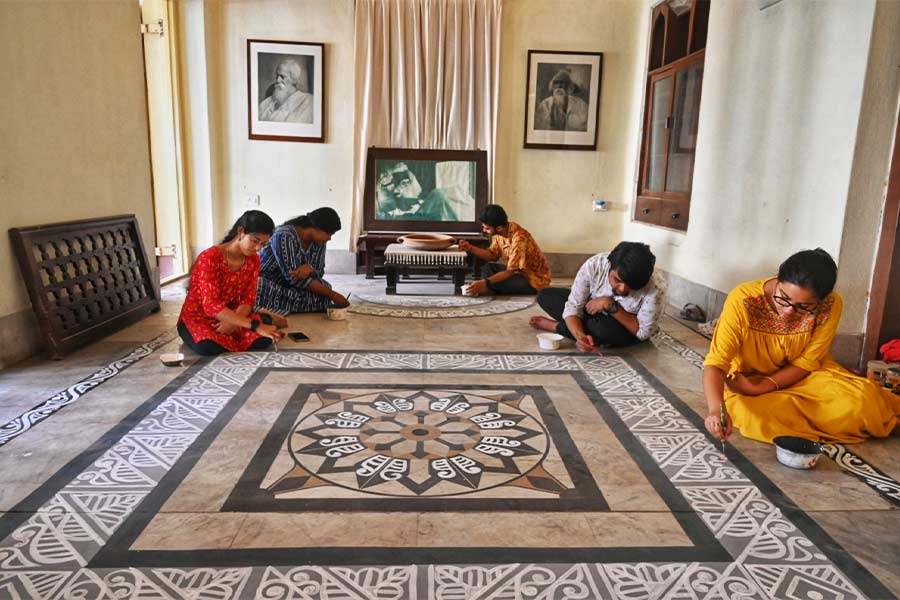Green activists have complained that all political parties in West Bengal, both in power and in the opposition, are continuing with the historic trend of ignoring rural environmental agendas during canvassing for the July 8 panchayat elections.
The environmental lobby has alleged that rural areas in the state are plagued by a range of environmental problems.
Incidentally on Saturday, the West Bengal State Election Commission issued a guideline to all district panchayat election officers and district magistrates asking them to monitor that the green norms during campaigning, particularly management of plastic waste and blaring of microphones, are followed. The directive came following an earlier appeal by green activists regarding the same.
The Plurals has joined hands with environmental non-profit Environment Governed Integrated Organisation (EnGIO) to probe how the crucial environmental issues have been affecting rural regions of the state.
The report — How green are Bengal Panchayats: what is data saying? — has been prepared based on data generated by several departments and agencies of both the Union and the West Bengal governments; and non-profits, particularly (CSE); said Sujata Basu, a senior researcher associated with the non-profit.
“We have identified 11 important green issues affecting Bengal’s rural areas and tried to see what the data is saying on those. We used whatever latest data could be obtained on the issues. Clearly, as per the data, the situation is not rosy,” added the expert.
The major findings are as follows:
Waste management
As of 2022, 119 out of 41461 villages in Bengal only have solid waste management arrangement – less than 0.5%- and 21 villages – less than 0.1% - the liquid management system. The National Green Tribunal (NGT) has fined the state about Rs 3,500 crores for not complying with norms.
Countering Climate Change
West Bengal is the 60th most climate vulnerable region globally out of 2,600 regions assessed; fourth highest risk prone zone in India. Rural areas in coastal districts, central Bengal districts like Bankura; Birbhum as well as north Bengal stand highly vulnerable.
Air pollution impact
Ninety-two per cent of the rural population, in 2020, lost five to seven years of lifespan due to air pollution exposure. In 2019, only Kalimpong, among all the 23 districts of Bengal, recorded annual PM 10 pollution level within the national permissible limit. Two predominantly rural districts, Bardhaman and Bankura, topped the pollution table with Kolkata behind.
Forest cover
Between 2017 and 2021, the forest cover in the state got reduced by 70sqkm, more in north Bengal but also in south Bengal, as per State of Forest Report 2021.Most of the affected areas fall under panchayats.
Water pollution
West Bengal has the highest number of arsenic-affected people in the country. Eighty-three blocks in mostly eight districts of the state have groundwater affected by arsenic contamination. Almost 90 per cent of the arsenic-affected groundwater in the affected areas is used for irrigation, hence, multiplying risk. About 12 per cent of the population in eight of the state’s 23 districts is impacted by water contaminated by fluoride.
Groundwater situation
As per latest assessment, out of 345 assessed units, 232 units are safe, 31 are semi-critical, 22 are critical and 60 are of poor groundwater quality; most in rural Bengal.
Pesticide use
West Bengal is sixth in chemical fertiliser consumption in the country; has consumed 17,062 tonnes in between 2017 and 2022; around six per cent of the total national consumption. However, the state has done well in biofertiliser consumption and stands second in the country.
Drinking water supply status
West Bengal has only 29.35 per cent tap water supply in rural households; one of the worst statistics in the country.
Damaging brick kilns
The state has about 12,000 brick kilns, most operating illegally, and damaging the agricultural land by damaging the top soil.
Sustainable development goal performance
West Bengal is ranked at 12th in India; but slipped in five indicators during 2019-20; one of the country’s worst performers in SDG goal 15 - life on land category - which covers terrestrial ecosystems, forests and biodiversity loss.
Environment crimes
Between 2018 and 2020, there have been 222 recorded environmental crimes in the state with a rate of 0.1 per cent of overall cases with chargesheet filing rate being 68 per cent; both being within the lowest figures in the country as the national averages are 4.7 and 98.9 per cent respectively. A sizeable number of green crimes occurred in rural or adjoining peri-urban areas.






